Ghanaian cuisine has a long and illustrious history. Ghanaians eat one or two large meals daily, with "small chop" or light snacks such as seasonal fruit or meat skewers in between.

Meals are noteworthy and highly esteemed among people worldwide. Even in the African culture, meals are part of a tradition, and several are peculiar to each community.
Ghanaian cuisine has a long and illustrious history. Ghanaians eat one or two large meals daily, with "small chop" or light snacks such as seasonal fruit or meat skewers in between.
Rice Jollof with tomato sauce spices from the region's poultry meat. Root vegetables and tubers such as yam, cassava, and plantains are stapled foods in this West African country and provide the majority of the Ghanaian diet.
Corn and rice appear daily, as do warm-weather fruits such as watermelon, papaya, and mango. Available vegetables include tomatoes, onions, and peppers.
Because Ghana is located on the West African coast, fish is the protein of choice. As a result, fish soups and stews are very popular. In addition, palm oil and fruits, such as coconut, contain oils and fats. Therefore, these simple ingredients are used to make a variety of Ghanaian dishes.
Top 10 Ghana's most popular foods
The top 10 most popular Ghanaian foods are listed below. While some processed versions of these ingredients are available outside of Ghana, the real thing can only be found in West Africa.
Soup and Fufu
Fufu and soup represent a meal that is typically consumed once per day. Fufu is a paste formed into a ball and placed in the center of the liquid. Fufu, made from root vegetables such as cassava and unripe plantains, is similar to polenta or grits in Western cuisine.
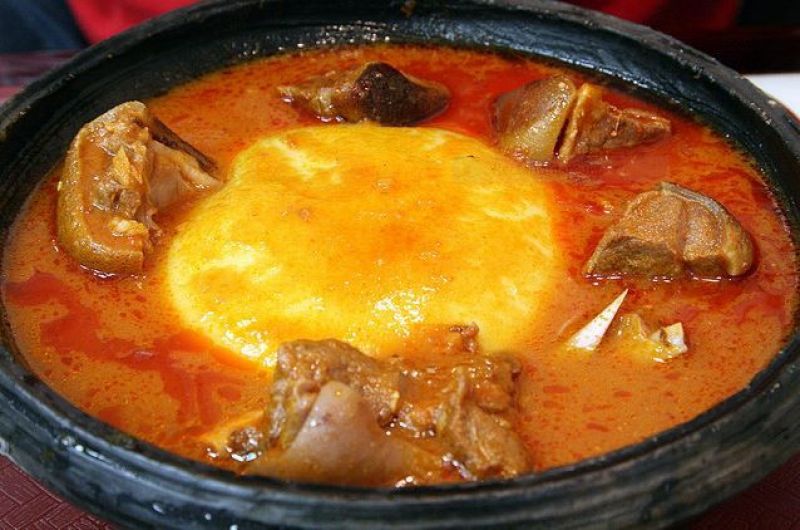
Processing cassava and plantains into Fufu is a labor-intensive process. Nevertheless, Fufu is also widely used in Nigerian cooking. The soup portion of this meal is a flavorful complement to the heavy Fufu.
This traditional dish is enhanced by a light soup made of peanuts, chiles, ginger, tomatoes, and other readily available ingredients. These soups may resemble a thin sauce.
Kokonte
Kokonte is similar to Fufu but is a less expensive option for the same high-calorie meal. Kokonte, in contrast to the white, fresh quality of Fufu, is made from dried cassava and appears brown.
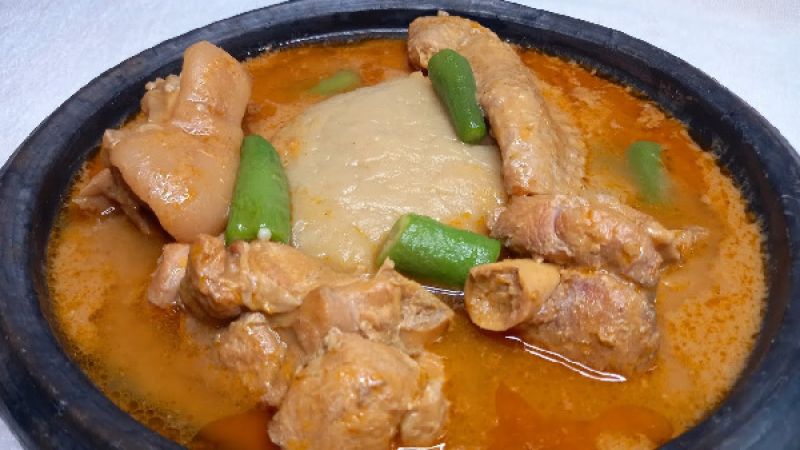
In addition, Kokonte is made entirely of cassava, whereas Fufu may contain plantains, yams, or other root vegetables and tubers. One significant advantage of Kokonte is its ease of use. Kokonte does not require the laborious pounding technique that fresh Fufu does.
Kokonte, on the other hand, requires only hot water to bring the dried cassava to life. Kokonte is typically served with a light soup such as Fufu.
Banku
Cassava is an essential crop in Ghana, accounting for most calories consumed in Western African countries. Banku is also a cassava dough product, but this recipe includes corn and a brief fermentation period.
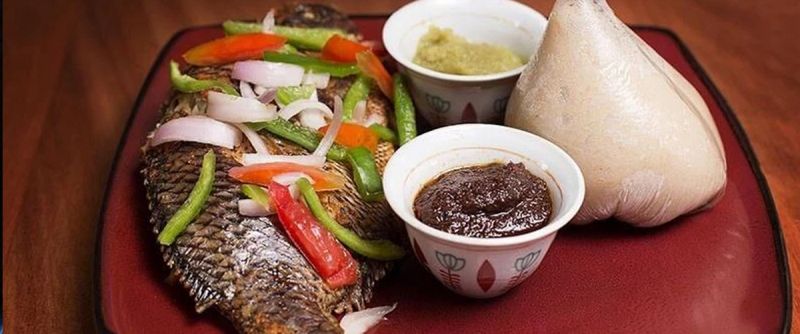
Fresh cassava soaks for a day with corn grains before becoming a smooth, wet dough. Banku only takes about two days to ferment in Ghana's heat. This dough is then boiled and kneaded to produce a firmer product. After that, the dough is steamed and served with stew.
Banku is especially popular among the Ewe, Fante, and Ga people of Ghana's southern regions.
Jollof Rice
Jollof Rice served for special ceremonies and celebrations, showcases the best Ghanaian cuisine. Beef, chicken, or goat is first steamed with delectable spices such as ginger and garlic.
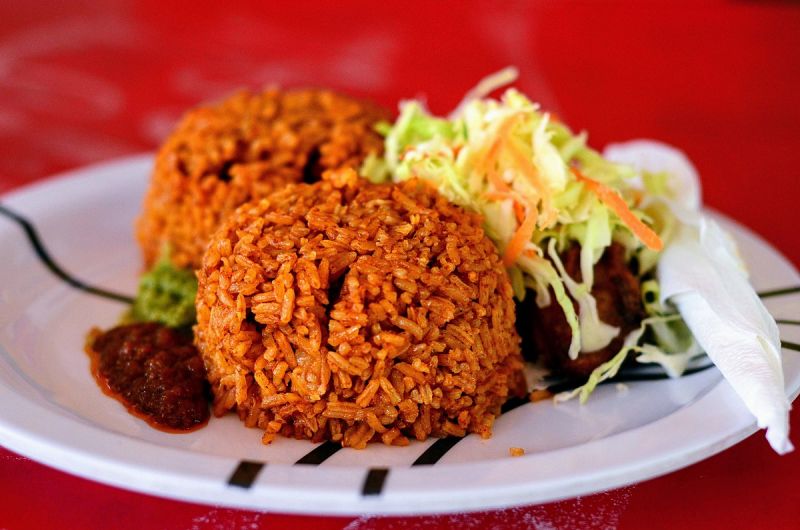
Then, jasmine rice, black pepper, chiles, and tomato paste are added for a hearty, flavorful meal. Jollof Rice goes well with fried fish or a vegetable medley as a side dish. Shito is a popular Ghanaian condiment made from a sweet, spicy pepper frequently served with Jollof Rice.
Jollof Rice's descendants, like Waakye's, can be found on both sides of the Atlantic. If you've ever had Jambalaya, you'll recognize the flavors of Jollof Rice.
This dish's popularity is growing, inspiring urban food festivals and the August 22 celebration of World Jollof Day. There's even a dance dedicated to Jollof Rice! Jollof rice is also famous in other parts of Africa, including Nigeria.
Waakye
Waakye is a traditional Ghanaian dish derived from the Hausa language.
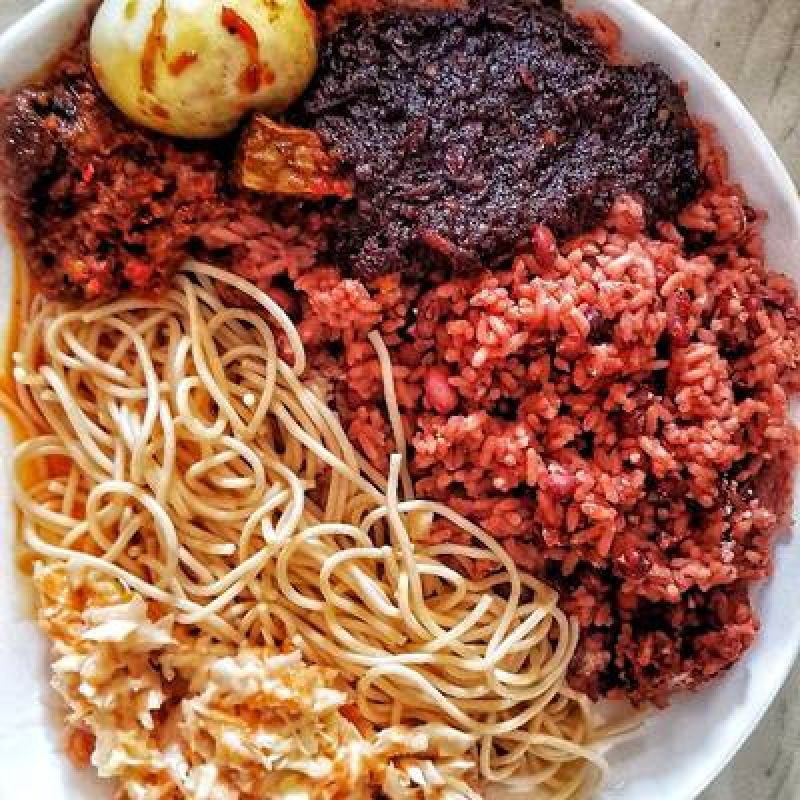
Waakye means "beans," and this dish consists solely of rice and beans. Waakye, on the other hand, transforms into one of Ghana's favorite foods with its numerous accompaniments, such as:
- Eggs boiled
- Salads of vegetables
- Hot pepper
- Plantains fried
- Waakye soup
- Avocado with hot pepperWaakye is now a part of Caribbean and South American cultures due to the 17th-century trans-Atlantic slave trade.
Waakye's ancestors can be found in Jamaican and Trinidadian cuisines that use kidney beans and coconut milk.
This dish is known as "Cook-Up Rice" in Guyana. The Brazilian version is "O Arroz Com Feijo," which translates as "The Foundation."
Etor
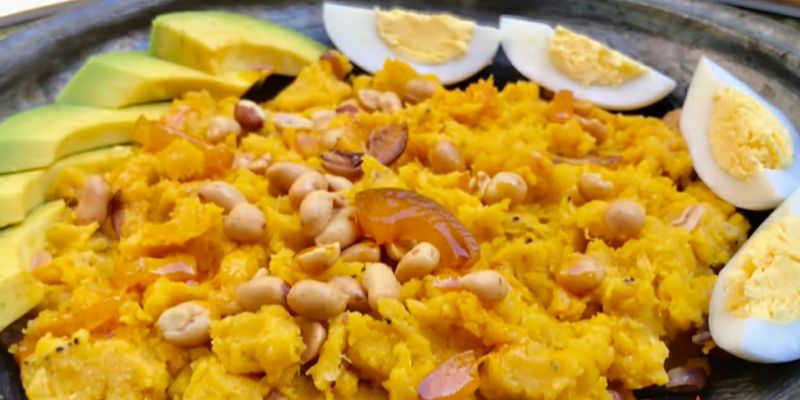
Etor, like Banku, is one of Ghana's most popular Ga tribe foods. Etor is a mashed yam dish with various savory and rich ingredients. This dish is served at puberty rites, birthdays, and wedding ceremonies.
This mustard yellow paste is made from mashed yams, ripped plantains, roasted peanuts, pepper, salted fish, and palm oil. Etor is typically served with boiled eggs and roasted peanuts on the side.
Kelewele
We've mentioned fried plantains several times on this list. Red Red is frequently served with fried plantains to round out a meal. Kelewele is the official name for spicy Ghanaian fried plantains. This Ghanaian dish is likely one of the most universal on this list.
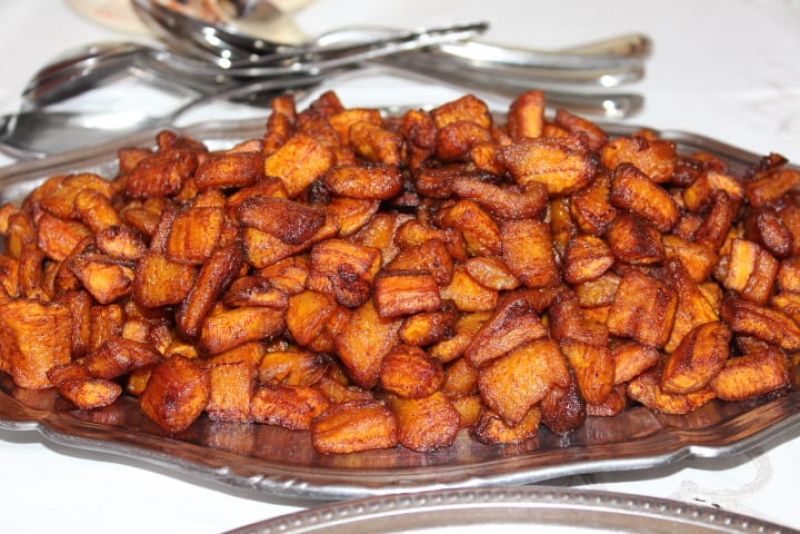
Street vendors frequently sell Kelewele as a quick small chop snack. Ginger, anise seed, and cayenne pepper are the spices used in homemade Kelewele recipes.
Season Kelewele with cinnamon, nutmeg, and clove for a sweet twist.
Plakali
Plakali, like Fufu and Banku, is another cassava dough variation. Plakali, on the other hand, is only served with groundnut or palm nut soups. Plakali is famous among the Ahanta and Nzema tribes of Western Ghana.
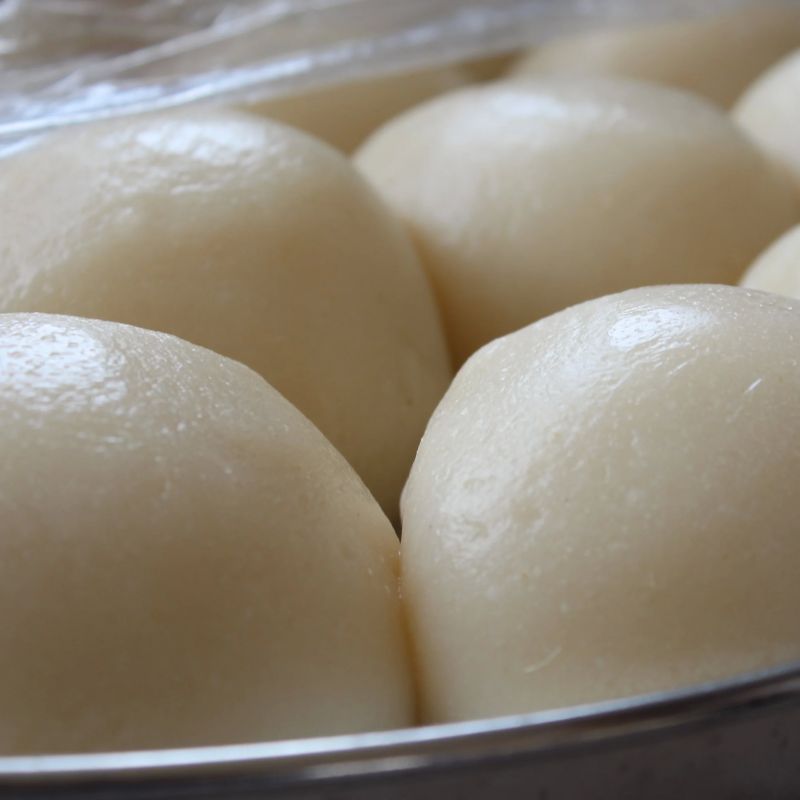
Plakali, like many of the most popular Ghanaian foods on this list, can be found in areas affected by the illegal slave trade. Plakali and Groundnut Soup, as well as a portion of Virginia, are eaten in South American countries such as Argentina, Bolivia, and Peru.
Tubaani
Tubaani is a protein-rich steamed pudding wrapped in katemfe leaves eaten by communities in northern Ghana. These leaves can also be used to cover Red Red and Waakye.
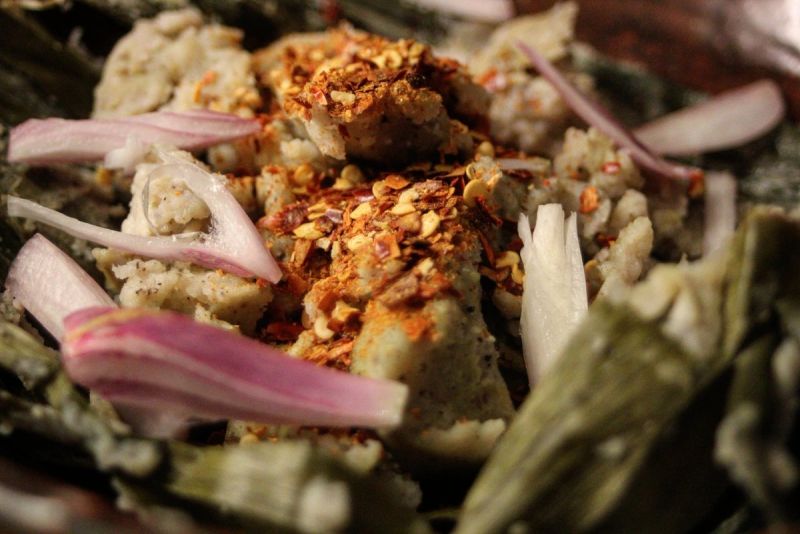
This steamed dish is made with black-eyed pea starch and water. The peppers and onions add spice and flavor to this starchy side dish. This eye-catching dish is frequently served at celebrations in northern Ghana.
Tubaani is a great vegan option that contains a good amount of protein. Even steamed puddings like Tubaani are eaten with the right hand in Ghana. Utensils and the left hand are not used for eating.
Eating or offering food with your left hand is considered impolite because it is only used for personal hygiene.
Kenkey
Steamed food is popular in many cultures worldwide, from dumplings to tamales and Kenkey. Corn is fermented and boiled in Ghana to make flexible Kenkey dough.
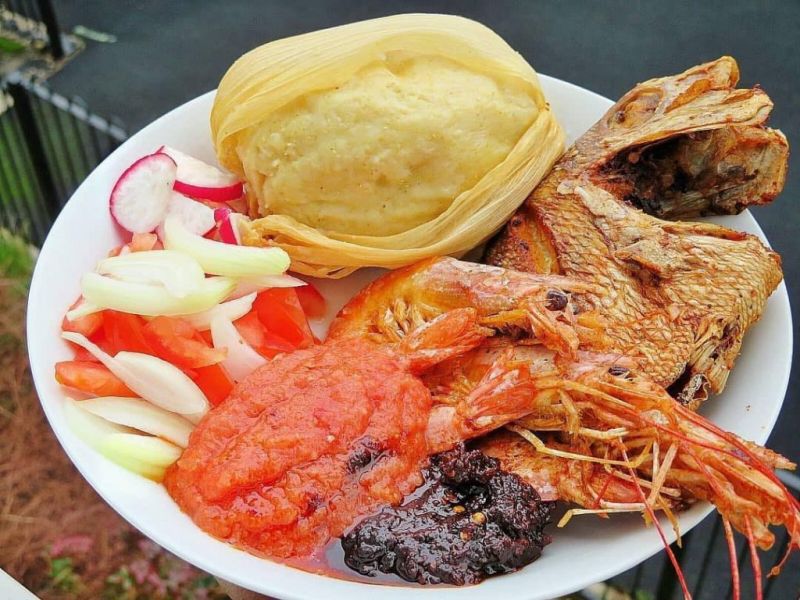
This sourdough is then shaped into a bun and steamed. Kenkey is typically served alongside a stew or fried fish entree. Kenkey variants can be found in Togo, Benin, Guyana, Trinidad, and other African and Caribbean countries.
Kenkey-like dumplings stuffed with pumpkin, coconut, plantain, and sweet potato are famous in the Caribbean.

